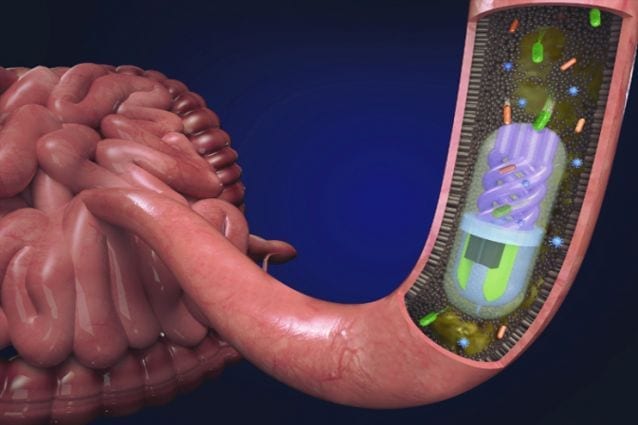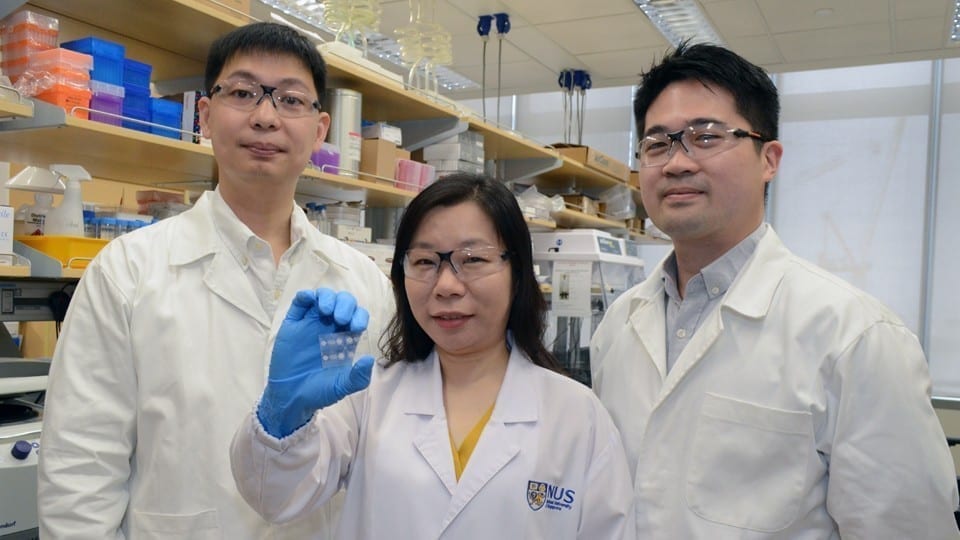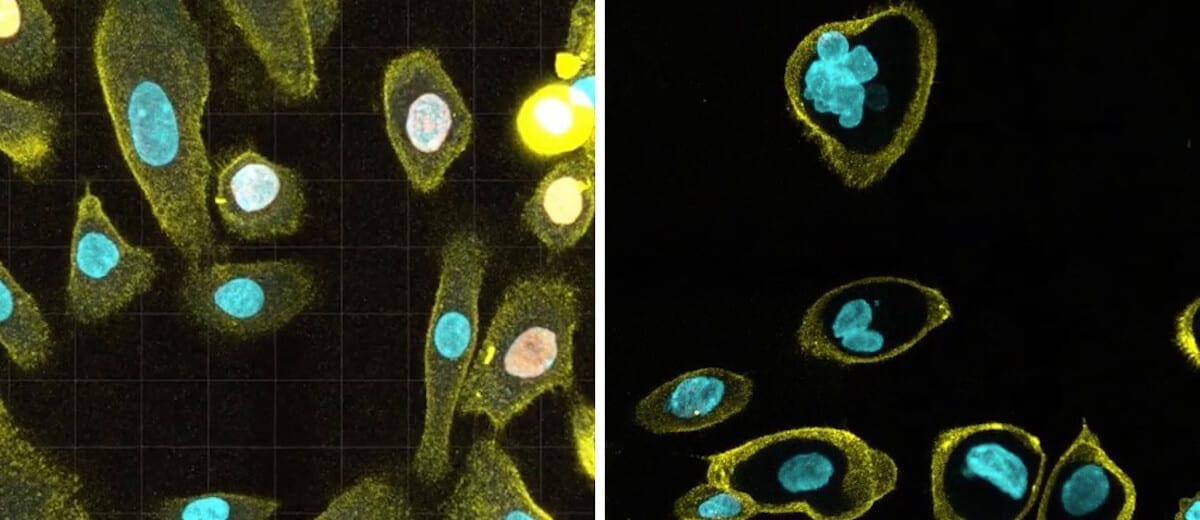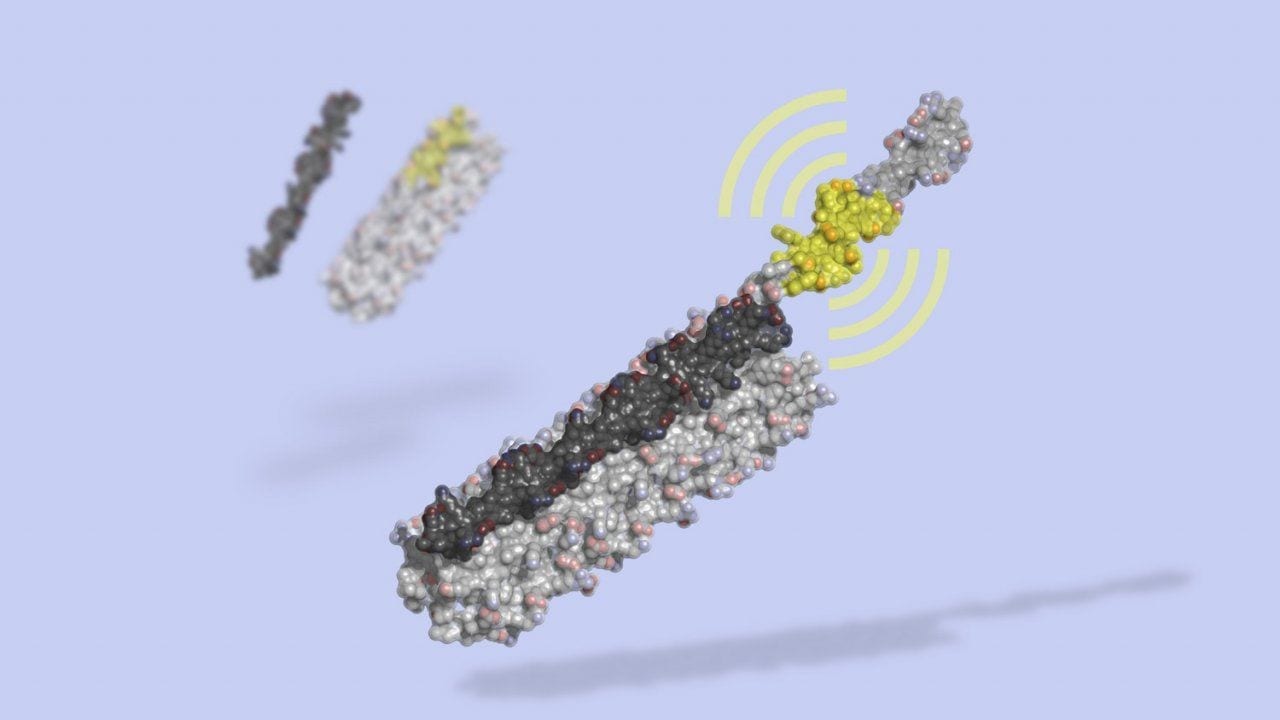
The pill is the first known working device capable of non-invasively and accurately assessing the profile of bacterial species inhabiting any stage of the gastrointestinal tract.
A research team led by Tufts University engineers has developed a 3D printed ingestible pill that samples bacteria found in the gut — known as the microbiome — as it passes through the gastrointestinal tract (GI). The ability to profile bacterial species inhabiting the gut could have important implications for the understanding of conditions that affect and are affected by the intestinal microbiome, according to the researchers.
The 3D printed pill described in the journal Advanced Intelligent Systems represents the first non-invasive diagnostic tool capable of providing a profile of microbiome populations throughout the entire GI tract, according to the researchers. Current methods of sampling the microbiome involve primarily the analysis of fecal DNA and metabolites, but that approach provides little information of the environment upstream of the distal colon, where bacterial species can vary significantly.
The pill has been studied extensively in vitro and in vivo and found to provide accurate identification of bacterial populations and their relative abundance, the paper says. It has been tested in pigs and primates, yet clinical trials will be needed to determine if the pill can be used routinely in humans for clinical care.
More than 1,000 species of bacteria inhabit the healthy gut. The vast majority of these bacteria have a beneficial, supportive role in digestion and protection against disease. When the natural balance of the microbiome is disturbed, a condition called “dysbiosis” occurs, which can be associated with inflammation, susceptibility to infections, and even the exacerbation of other diseases such as cancer. Research is increasingly unveiling specific microbiome metabolites that have beneficial or protective effects against disease.
“We are learning quite a lot about the role of gut microbiome in health and disease. However, we know very little about its biogeography,” said Sameer Sonkusale, professor of electrical and computer engineering at Tufts University’s School of Engineering and corresponding author of the study. “The pill will improve our understanding of the role of spatial distribution in the microbiome profile to advance novel treatments and therapies for a number of diseases and conditions.”
The pill is more sophisticated than just a sponge. It is manufactured in a 3D printer with microfluidic channels that can sample different stages of the GI tract. The surface of the pill is covered with a pH sensitive coating, so that it does not absorb any samples until it enters the small intestine (bypassing the stomach) where the coating dissolves. A semi-permeable membrane separates two chambers in the pill – one containing helical channels that take up the bacteria and the other containing a calcium salt-filled chamber. The salt chamber helps create an osmotic flow across the membrane which pulls the bacteria into the helical channels. A small magnet in the pill enables one to hold it at certain locations in the gut for more spatially targeted sampling using a magnet outside the body. A fluorescent dye in the salt chamber helps locate the pill after it exits the GI tract.
“The design of this device makes it incredibly easy to use, posing little risk to the subject, yet providing so much information,” said Giovanni Widmer, professor of infectious disease and global health at Cummings School of Veterinary Medicine at Tufts University, and co-author of the study responsible for testing the pill’s effectiveness in animals and for high throughput sequencing the microbiome samples.
The researchers see this technology as bridging an important gap in understanding the complexity of the ecosystem of the gut. “We have advanced technologies to analyze bacterial populations using DNA sequencing, but until now have not had a way to sample bacteria throughout the GI tract in a way that is not invasive,” said Hojatollah Rezaei Nejad, a post-doctoral fellow studying novel applications of 3D printing in Sonkusale’s laboratory at Tufts and lead author of the study. “By sampling non-invasively, this pill could help us better identify and understand the role of different intestinal bacterial species in health and disease.”
Learn more: 3D printed pill samples gut microbiome to aid diagnosis and treatment
The Latest on: 3D printed ingestible pill
[google_news title=”” keyword=”3D printed ingestible pill” num_posts=”10″ blurb_length=”0″ show_thumb=”left”]
via Google News
The Latest on: 3D printed ingestible pill
- Ingestible wellness proves an easy pill to swallowon May 6, 2024 at 4:59 pm
Ever since the days of patent medicines in the late 19th century, consumers looking for ingestible wellness enhancers — whether ... They developed Lyma: not quite a vitamin pill, but a ‘super ...
- Swallowable sensor unfurls in stomach to monitor gut healthon May 6, 2024 at 4:45 am
The pill-size capsule contains a long ... The device’s 25-centimeter-long ribbon-like sensor contains a line of gold electrodes and is housed inside a 3D-printed resin capsule. Water-soluble tape ...
- Best Budget 3D Printer of 2024on May 5, 2024 at 11:23 pm
and traditional paper printers Credentials 6 years working professionally in the 3D printing space / 4 years testing consumer electronics for large websites. CNET’s expert staff reviews and ...
- Best 3D printers for 2024on May 5, 2024 at 10:54 pm
However, finding the right 3D printer for your needs and skill level can be difficult, especially with so many different models and designs available. If you figure out what it is you want to ...
- These 3D-printed homes take just 4 days to build — here’s how they could solve one state’s massive housing shortageon October 7, 2023 at 2:48 am
A recyclable 3D-printed home made from natural materials has been revealed to the public, and this may only be the beginning. The design is part of a project to create a “factory of the future ...
- 3D Printed Aerospike Was Designed By AIon May 9, 2023 at 1:37 am
We’re still in the early days of generatively-designed objects, but when combined with the capabilities of 3D printing, we’re already seeing some interesting results. One example is this new ...
- 3D-Printed, Factory-Built Homes Coming To A Community Near Youon March 28, 2023 at 6:15 am
Opinions expressed by Forbes Contributors are their own. I'm a journalist covering professional and industrial 3D printing. California-based 3D-printing construction tech company Mighty Buildings ...
- 3D-Printed Rockets Set To Blast Offon June 30, 2022 at 9:31 am
Opinions expressed by Forbes Contributors are their own. I'm a journalist covering professional and industrial 3D printing. Relativity Space stage 1 3D-printed rocket being installed at Cape ...
- 3D Printed SCARA Arm With 3D Printer Componentson October 7, 2020 at 5:01 pm
One of the side effects of the rise of 3D printers has been the increased availability and low cost of 3D printer components, which are use fill for range of applications. [How To Mechatronics ...
- 3D Printingon March 18, 2019 at 1:50 pm
Additive manufacturing or 3D printing is a process of making a three-dimensional solid object of virtually any shape from a digital model. 3D printing is achieved using an additive process ...
via Bing News










